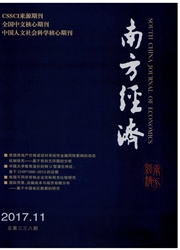

 中文摘要:
中文摘要:
基于最优货币政策规则的研究框架,本文从非线性总供给曲线和中央银行非对称偏好的角度来阐述货币政策规则中非对称性的理论形成,并利用GMM方法估计和检验了我国货币政策反应函数中的非对称性。研究结果表明非线性总供给曲线可以作为解释我国货币政策非对称反应的一种来源,更重要的是,中央银行对通胀缺口存在负向偏好,且这种负向的通胀偏好可以很好地解释我国“后金融危机时代”的通货膨胀偏差,但对产出缺口的非对称偏好并不显著。此外,不同通胀目标的稳健性研究表明,中央银行都存在负向通胀偏好,而且该负向偏好随着长期通胀目标的降低而逐渐减弱。
 英文摘要:
英文摘要:
This paper attempts to explain the asymmetries in the optimal monetary policy rules on the aspects of central bank' s asymmetric preferences and nonlinear aggregate supply curve, and uses generalized method of moments (GMM) to estimate and examine the asymmetries in China' s monetary policy reaction functions. The empirical results show that the nonlinearity in aggregate supply curve is important to explain the asymmetry in monetary policy; the central bank performs monetary policy with negative preference on inflation deviations, which might account for the inflation bias in the post-financial-crisis era, whereas the asymmetric preference on output gaps is not significant. Additionally, the robust tests with different inflation targets support the negative preference on inflation deviations and reveal that the decrease in inflation targets would weaken the negative preferences on inflation deviations.
 同期刊论文项目
同期刊论文项目
 同项目期刊论文
同项目期刊论文
 期刊信息
期刊信息
